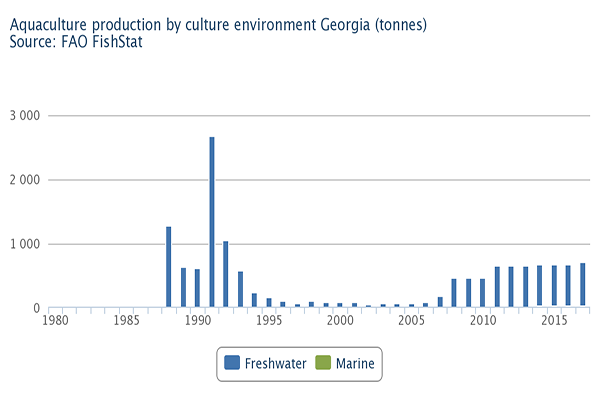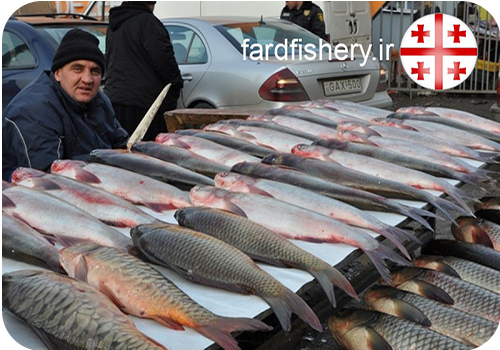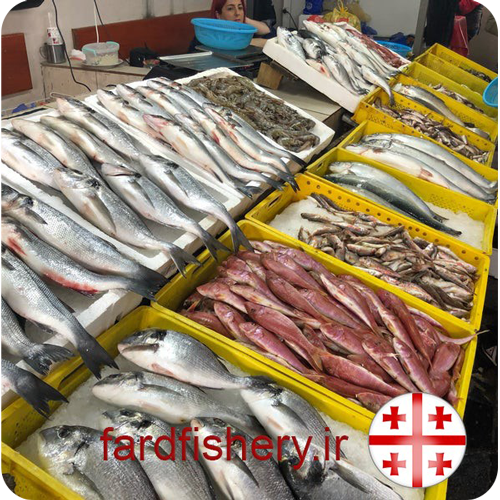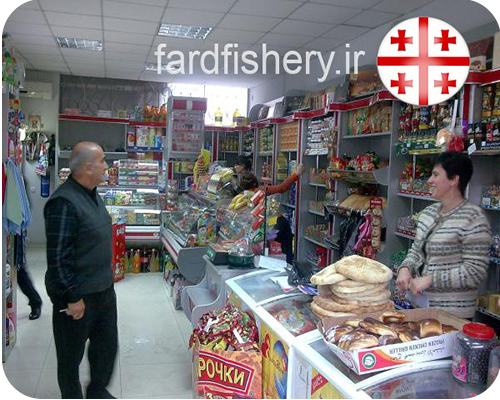Statistics, feed and fish market in Georgia
In the outflow waters of the cold water fish system there are nutrient-rich substances for warm water fish such as common carp, silver carp, bighead and amaurus. The aquaculture feeds the carp only at an early stage until it reaches a weight of 100 g and again before harvesting, so that the fish become obese. Common carp and herbaceous carp naturally grow about 2kg in the May production season. If the feedstock is of good quality, the wetland conditions will be favorable, and feeding will be done. A field study showed that aquaculture for two-year-old carp used yellow (orange) soybean, soybean oil, and garlic, some in these ponds mixing soybean oil or fish oil and Wheat is soaked in water for a while. And usually the starting feed for salmon is imported from Turkey and sometimes from America. Generally, fish farms are not equipped with necessary equipment and often lack the simplest tools to monitor pool conditions. For example, it lacks pH meters, dissolved oxygen analyzers, water hardness, or electrical conductivity and thermometers. Another type of aquaculture is salmon farming in concrete pools.
Number of salmon farms by the Russian method is growing now, And of course, given the insufficient knowledge in this country, the survival rate is less than 30% for traditional trout farmers. In some farms to produce fish feed, they supply raw materials with some vitamins and a certain amino acid composition. While some fish farms also prefer to use Italian salmon, it seems that Italian-made foods seem to contain more nutrients, which have a wider set of antioxidants, antifungal additives. And preservatives are used to reduce deterioration and quality of feed during storage and storage. Italian dishes are more expensive than Turkish fish.
Italian foods have a conversion rate of 2 percent higher than Turkish granules. As low-cost fish heaters are sold at the same basic price at all outlets, this indicates that industry’s overall productivity and profitability can be increased through the purchase of higher quality feed.
There are specialized fish markets in every major Georgian city. In the coastal areas, there are fish markets in Batumi, Poti, Ureki and Matakva. Some fish markets are privately owned, for example Batumi that offers good health facilities. But other fish markets belong to the municipality or the state system.
The largest grocery market in Tbilisi is where there are about 20 stores offering fishery and seafood that are sold through imports or seafood.
Types of fish marketed in batumi:
- Sprats
- Trout
- Salmon
- Types of sturgeon
- Sardines
- Atlantic mackerel
- Seabream
Salmon and carp are the only aquaculture products on the market. A significant portion of the fish imported is frozen salmon from Norway. It is said that in the Tbilisi metropolitan area, there are about 50 fish retailers active in various markets, with total sales of fishery-caught products in the Tbilisi market ranging from 5 to 6 tonnes per day in summer and between 10 and 12 tonnes in winter. To be struck. Cold storage facilities are available in Tbilisi.
Seafood products are relatively more expensive, such as Sturgeon, salmon but Trout, often sold directly to restaurants by intermediaries and aquaculture producers because restaurants form the main market for these fish.
The market share of supermarkets in Tbilisi and other major Georgian cities is increasing in sales of catched products. Fishery products are generally more expensive in supermarkets than food markets and specialized fish markets. An increasing number of wealthy citizens (especially in Tbilisi) prefer imported goods that are generally of better quality. Khvamli supermarket in Tbilisi sells salmon located in grea.
Common carp and grass grown through aquaculture are mainly marketed in rural areas, with small amounts reaching the markets of Tbilisi and other major cities during the main harvest period.
Salmon produced by fish farms are mainly sold in Tbilisi. Prices of fishery products fluctuate throughout the year and prices of fresh fish in winter are lower than in summer, so demand for fresh fish in winter is higher. Packaged products are generally sold in the summer.
To meet domestic demand for fishery products, imports have increased in volume and value in 2005 and beyond.
Types of fish imported to Georgia:
Armenia: Fresh, salted, frozen fish and Trout
Azerbaijan: Sturgeon and smoked fish
Russia: Varieties of frozen fish, salt and tuna
More than 95% of fish imports in 2003, Both in size and number, were frozen.
Seafood exports have fluctuated in recent years. At present, the export value of Georgia’s export fishery products has been limited and low.






